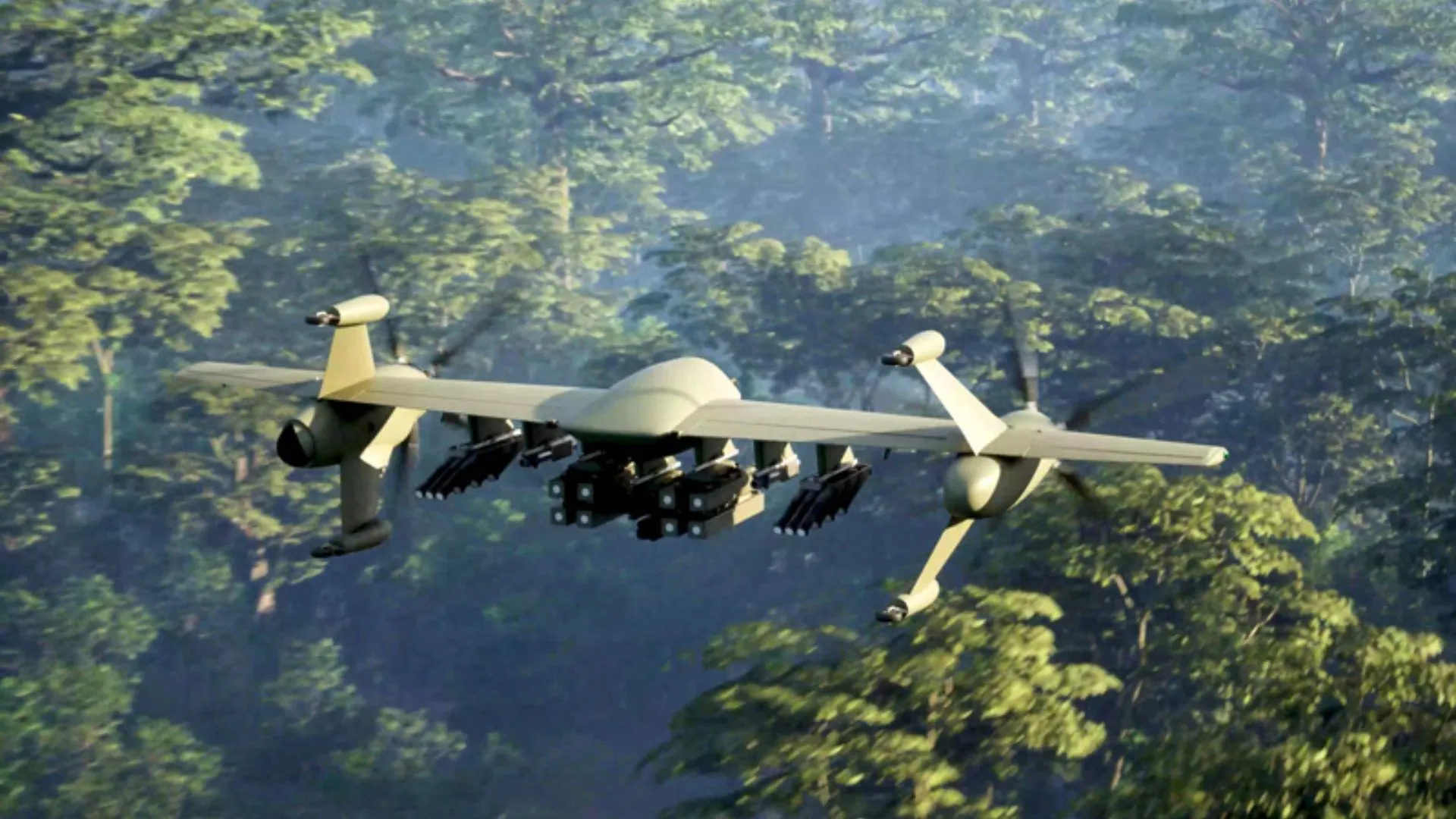
Sikorsky, a Lockheed Martin company, has unveiled its new Nomad family of vertical takeoff and landing (VTOL) aircraft, less than a year after proving the flight efficiency and reliability of its experimental rotor-blown wing drone.
The new twin-proprotor design combines a helicopter’s vertical agility with a fixed-wing aircraft’s speed and range, allowing it to take off, hover, and land vertically while cruising efficiently in forward flight.
The system marks Sikorsky’s latest effort to advance autonomous hybrid-electric aircraft that can operate in both military and civilian roles without the need for runways.
Giant runway-free drone
“We use the term ‘family’ to point to a key attribute of the design, its ability to be scaled in size from a small Group 3 UAS to the footprint equivalent of a Black Hawk helicopter,” said Rich Benton, Sikorsky’s vice president and general manager.
“The resulting Nomad family of drones will be adaptable, go-anywhere, runway-independent aircraft capable of land and sea-based missions across defense, national security, forestry, and civilian organizations.”
Sikorsky stated that the Nomad family will help boost operations. It will work alongside crewed aircraft like the Black Hawk to improve awareness, logistics, and strike abilities. This is especially important for operations in the Indo-Pacific, where long distances and spread-out bases present challenges.
The company announced the results of a successful flight test campaign in 2025 for the Nomad 50. This prototype has a wingspan of 10.3 feet and shows the good performance of its rotor-blown wing in terms of aerodynamics and vertical lift.
Sikorsky is now building the Nomad 100, a larger 18-foot wingspan Group 3 variant, with its first flight expected in the coming months.
The Nomad aircraft will use Sikorsky’s MATRIX autonomy technology. This technology includes software and sensors that help the aircraft plan routes, avoid obstacles, and carry out missions independently.
Developed in collaboration with DARPA, MATRIX has been tested on rotary and fixed-wing platforms and demonstrated in aerial firefighting, logistics resupply, and advanced aerial mobility missions.
Takes off like a helicopter, cruises like a jet
“Nomad represents breakthroughs for Sikorsky and the next generation of autonomous, long-endurance drones,” said Dan Shidler, Sikorsky’s director of advanced programs.
“We are acting on feedback from the Pentagon, adopting a rapid approach and creating a family of drones that can take off and land virtually anywhere and execute the mission, all autonomously and in the hands of Soldiers, Marines, Sailors, and Airmen.”
According to Sikorsky, the Nomad series is designed for missions ranging from reconnaissance and light attack to contested logistics and humanitarian operations.
Depending on mission requirements, the modular airframe can scale from Group 3 systems, weighing 56 and 1,320 pounds, to Group 4 and 5 classes exceeding 1,320 pounds.
Most variants will use fuel-efficient hybrid-electric propulsion, while larger models will employ conventional drivetrains for extended range and higher payload capacity.
The new family comes amid a broader shift in US military aviation toward autonomous teaming concepts, where drones operate alongside crewed aircraft to expand reach and reduce risk.